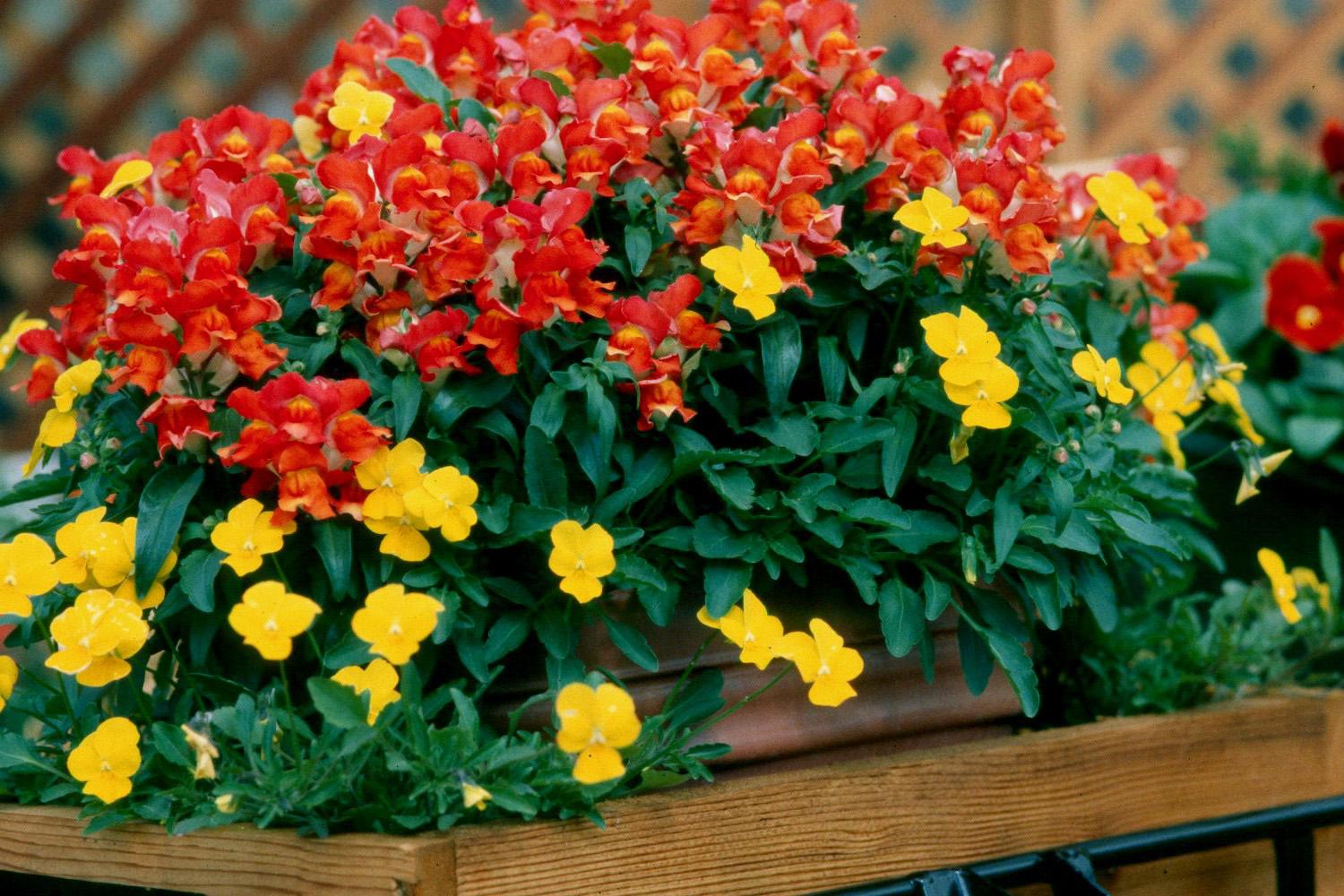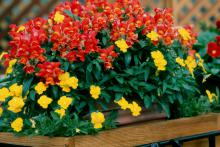Information Possibly Outdated
The information presented on this page was originally released on November 4, 2002. It may not be outdated, but please search our site for more current information. If you plan to quote or reference this information in a publication, please check with the Extension specialist or author before proceeding.
Snapdragons make ideal fall plantings
By Norman Winter
MSU Horticulturist
Central Mississippi Research & Extension Center
The snapdragon is one of the most beautiful plants for cool season color, and it thrives through winter until late spring or early summer heat arrives. Snapdragons love temperatures in the low 40s at night and low 70s by day, which make them ideally situated for fall in the South.
Many gardeners don't realize snapdragons are very cold hardy. Once established in the bed and hardened off, they can take sub-freezing temperatures with no problem. When intense cold spells arrive, they often suck almost all available moisture from beds. That is when we need to make sure they stay well watered. If it is really cold, completely cover the snaps with a layer of pine straw for a few days if necessary, removing once the temperatures have moderated.
Snapdragons prefer well drained, organic-rich beds prepared much like you would for pansies. Till in 3 to 4 inches of organic matter to a depth of 8 to 10 inches. While tilling, work in two pounds of a slow-release, 12-6-6-fertilizer per 100 square feet of bed space.
There is a color of snapdragon that is sure to fit any scheme. These include red, yellow, pink, burgundy, bronze, orange, white and multiple colors. For the most effective display, I still believe massing the beds in single colors is the way to go. A couple of years ago, I stopped at the Natchez Sonic Drive-In and saw their wonderful bed of 24-inch-tall yellow snapdragons.
Don't forget that as these fragrant spikes get larger, they also are good for cut flowers, particularly the old-fashioned Rockets. My favorites have been Sonnets and Liberty that get about 18 to 24 inches tall. I have been patiently waiting for the new selections to come our way, and I am happy to say that I have seen beautiful Ribbons that also get 18 inches and the new dwarf series called Montego.
Miniature varieties have always been popular in Mississippi, particularly the Tahiti, Bells and Floral Showers. The dwarf Montego series is a big improvement as they hold their flowers much more erect. These are great in the landscape and super for growing in containers.
Trailing varieties have really caught on with gardeners for use in the landscape, baskets and mixed containers. The big three series in trailing snapdragons are Lampion, Chandelier and Lumenaire. If you have grown these or looked closely, it becomes apparent they not only have a different habit and feel but also offer additional heat tolerance by virtue of hybridization of Antirrhinum majus with A. hispanicum and A. molle species from Spain. As is typical of the large varieties, the trailing types come in several colors.
Snapdragons work well in combination with pansies, panolas, violas, and ornamental kale or cabbage. Plant them in bold drifts in front of evergreen shrubs to show off their color. Try planting them close to beds of spring-flowering daffodils.
Snapdragons are not that hard to grow. Deadhead to keep flowers producing, water during dry spells, mulch for winter protection, and feed with a light application of fertilizer in very early spring and again a month later.
Snapdragon selections are very good right now and a little fall planting and sprucing up will give your home landscape an inviting appearance.



